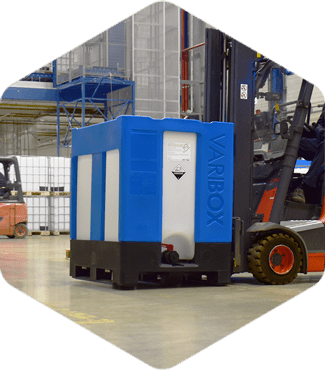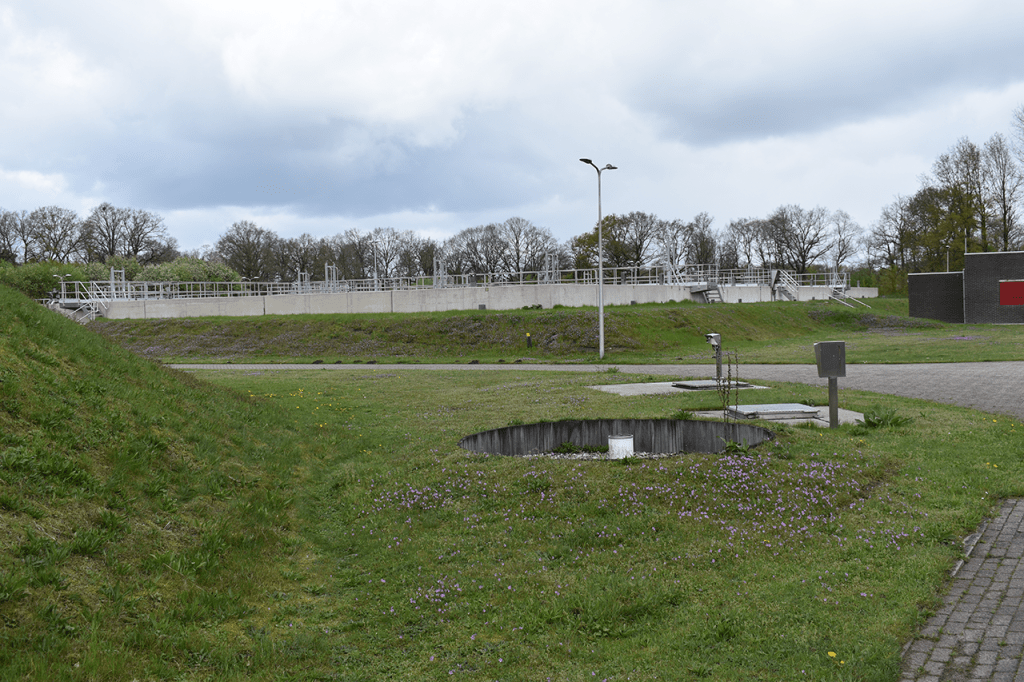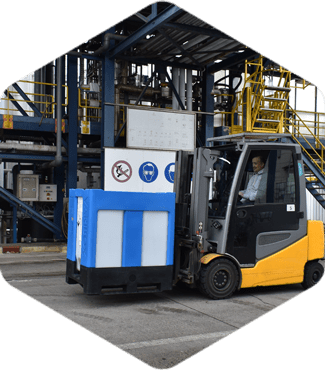Safely Using Chemicals in Water Purification
It’s time for another fantastic story about safely using chemicals in water purification. Time for an engaging, yet sustainable story about the safe use of chemical substances in water purification processes. This time, we’ll take you to a sewage treatment plant (STP) of Vechtstromen Waterschap in Oldenzaal. Safety is highly valued at Waterschap Vechtstromen, which is why they have embarked on a groundbreaking pilot at the STP in Oldenzaal to improve safety when working with chemicals. And that’s where the VARIBOX comes into play, an innovative Intermediate Bulk Container (IBC) designed for the safe storage and transportation of chemicals. Furthermore, VARIBOX ensures that the IBCs are carefully cleaned, tested, and repaired if necessary after use. Thanks to these processes, the VARIBOX containers can be reused, resulting in a sustainable solution. These critical steps are carried out by SenS Interclean, located in Hengelo. SenS Interclean is a reliable partner with specialized knowledge in cleaning plastic packaging. Through the collaborative efforts of Waterschap Vechtstromen, VARIBOX, and SenS Interclean, they strive for sustainable and safe use of chemical substances in the water purification process.


Vechtstromen Waterschap
Treating wastewater is one of the core activities of the Waterschap. They ensure that all wastewater in the area is purified through one of the 23 sewage treatment plants. These various facilities treat the wastewater from 800,000 residents, after which the water is returned to nature. However, it is not suitable for drinking water purposes, as that is the responsibility of the water supply company.
An individual uses approximately 135 liters of water per day for cooking, washing, showering, and toilet use. Almost all of this water ends up in the sewer. This dirty water, also known as wastewater, is then treated at the sewage treatment plant.
Safely Using Chemicals in Water Purification
The polymer supplied to Vechtstromen in IBCs is used to thicken the sludge generated during the wastewater treatment process. In the purification process, there is a sludge-water mixture that effectively digests the impurities from the water. In large secondary settling tanks, the clean effluent is released, and the sludge returns to the process. Some of the sludge is surplus and is drained and subsequently thickened. The polymer helps separate the sludge from the filtrate water. The more water removed from the sludge, the fewer transportation movements are required for sludge final processing in Hengelo.


Safety First
Safe use of chemicals in water purification can be achieved through various methods. In this case, it is accomplished by employing the VARIBOX SC (Single Containment). With this pilot project initiated by the Vechtstromen Water Board, in collaboration with advice and supply from JBC Solutions and cleaning services provided by Tank Cleaning Twente, the first steps have been taken to enhance the safe use of chemicals in water purification.
Previous Situation
In the previous setup, there was a lot of container handling involved in storing and transporting the chemicals. The delivery of chemicals took place at the proverbial “front door,” and the containers had to be placed in the correct location by the staff. Here comes the important improvement point: the standard IBC did not completely empty itself. As a result, during the emptying process, the IBC often needed to be tilted or lifted for optimal drainage. Sometimes, buckets were even used to extract the remaining chemicals from the container. This was obviously an undesirable situation.


New Situation
In the new setup, this is a thing of the past with the use of the VARIBOX. The inner container of the VARIBOX SC is specially designed for optimal drainage. Therefore, it is no longer necessary to tilt or lift the container during the emptying process. The buckets have naturally disappeared from the scene as well. This is a significant step towards increasing safety. But it does not stop there. Agreements have also been made with the supplier to deliver the container directly to the intended location, rather than at the proverbial “front door.” The only task that remains is connecting the heavy-duty crane to the pump. This is a simple and easy process, allowing the VARIBOX SC to be completely emptied in a safe manner.
Having the supplier install the VARIBOX aligns with the occupational hygiene strategy of the water board. Additionally, they use electric pallet trucks, eliminating the need for physical handling, and, of course, the water board does not need to purchase these vehicles.
Further in Sustainability
In addition to improving safety, there is another important aspect that influenced the choice of the VARIBOX, namely sustainability. Sustainability is a crucial part of the water board’s strategy. The (complete) drainage of the VARIBOX contributes to this goal. The VARIBOX IBCs are owned by the water board and will remain in circulation with the same product, eliminating the need for disposing of residual liquids. Consequently, cleaning the VARIBOX is no longer necessary, resulting in significant water savings.

VARIBOX SC 1000L
The VARIBOX SC is a rotomolded IBC with a lifetime of up to 10 years. Only the inner container needs to be replaced for up to 5 years. The truly reusable VARIBOX SC is the only IBC from VARIBOX that is available with coding colors and logos to match your company profile. The perfect way to differentiate your containers from your competition.
